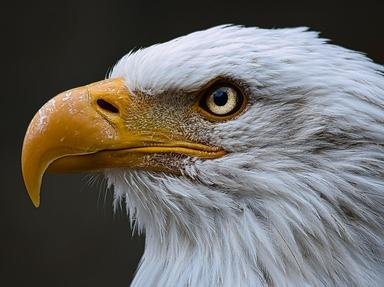Quiz Answer Key and Fun Facts
1. Once numbering in the billions, Ectopistes migratorius darkened the skies during migration but was hunted and trapped to extinction. What north American bird died out when its last known representative, named Martha, died at the Cincinnati Zoo in 1914?
2. What flightless seabird (Pinguinus impennis) of the North Atlantic stood nearly three feet tall, had black-and-white plumage like a penguin and was hunted to extinction in the 19th century?
3. Once the only parrot native to the eastern United States, what brightly colored green bird with a yellow head and orange face went extinct in the early 1900s as a result of deforestation, the feather trade, and extermination?
4. It's speculated that this bird went extinct due to habitat loss and the decline of its food supply. What sea duck, once common along the Atlantic coast from New England to Newfoundland, mysteriously vanished in the 19th century?
5. What fierce dark-plumaged bird of prey (Caracara lutosa) once lived only on Mexico's Guadalupe Island, where it was exterminated by goat herders who blamed it for livestock losses in the early 1900s?
6. Once found only in the salt marshes of Florida's Merritt Island and the upper St. Johns River, what small dark bird was declared extinct in 1990 after its habitat was flooded for mosquito-control?
7. What bird, once endemic to an island off California, was driven to extinction in the 1940s after its habitat was devastated by overgrazing from introduced goats?
8. This small, yellow-breasted songbird once nested in swamps and canebrakes of the southeastern United States. What bird, last reliably seen in the 1980s, is presumed to be extinct, likely due to habitat loss?
9. This large, black-and-white woodpecker of southern swamp forests was once called the "Lord God Bird" for its striking appearance and 30-inch (7.6-decimeter) wingspan. While it's presumed extinct by most, occasional but unconfirmed sightings continue to fuel some hope. By what name is Campephilus principalis better known?
10. This brilliantly colored red, blue, and yellow parrot was the last surviving macaw of the Caribbean, driven to extinction by hunting and habitat loss in the 1800s. What bird was it?
Source: Author
JJHorner
This quiz was reviewed by FunTrivia editor
rossian before going online.
Any errors found in FunTrivia content are routinely corrected through our feedback system.
